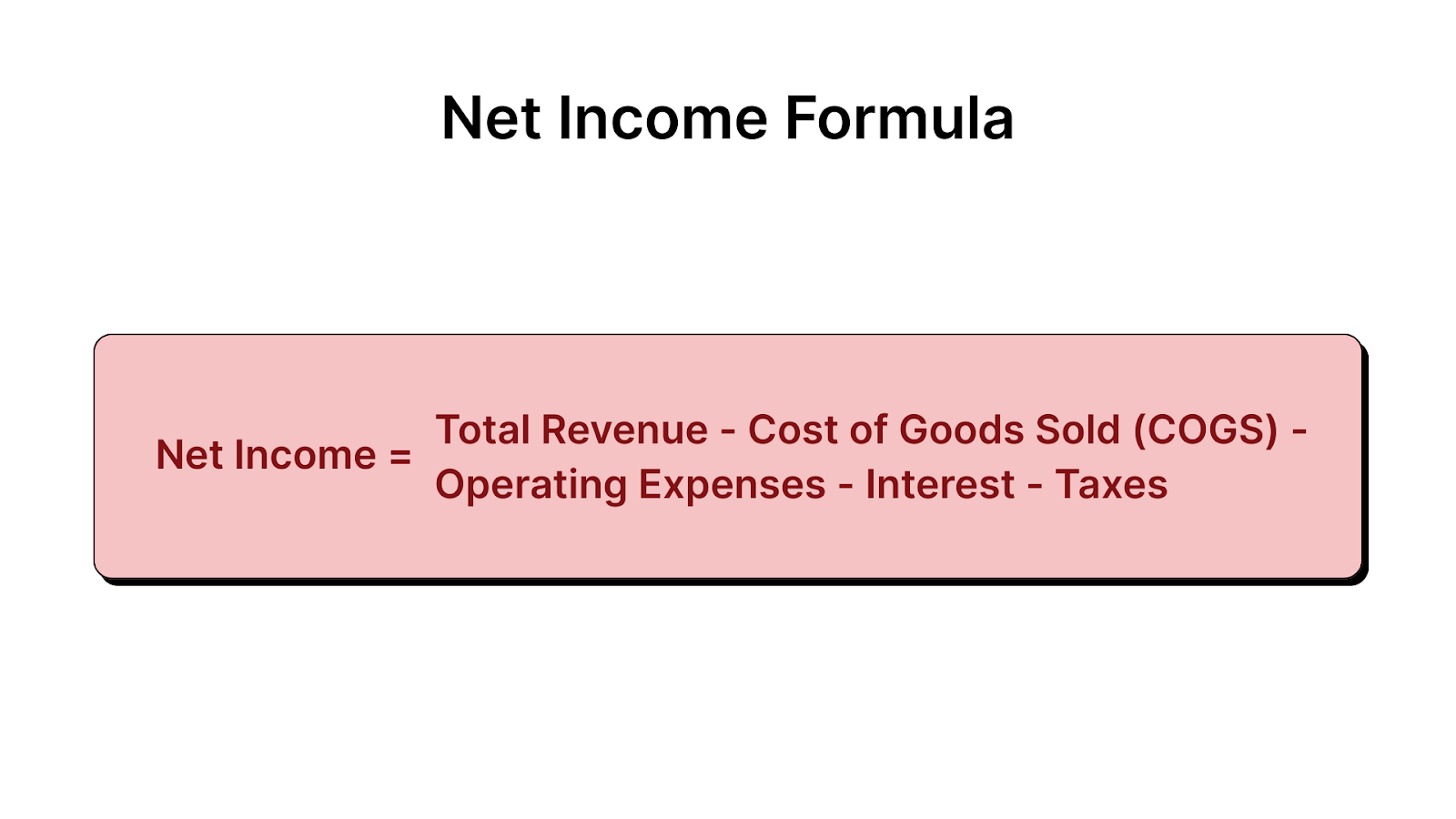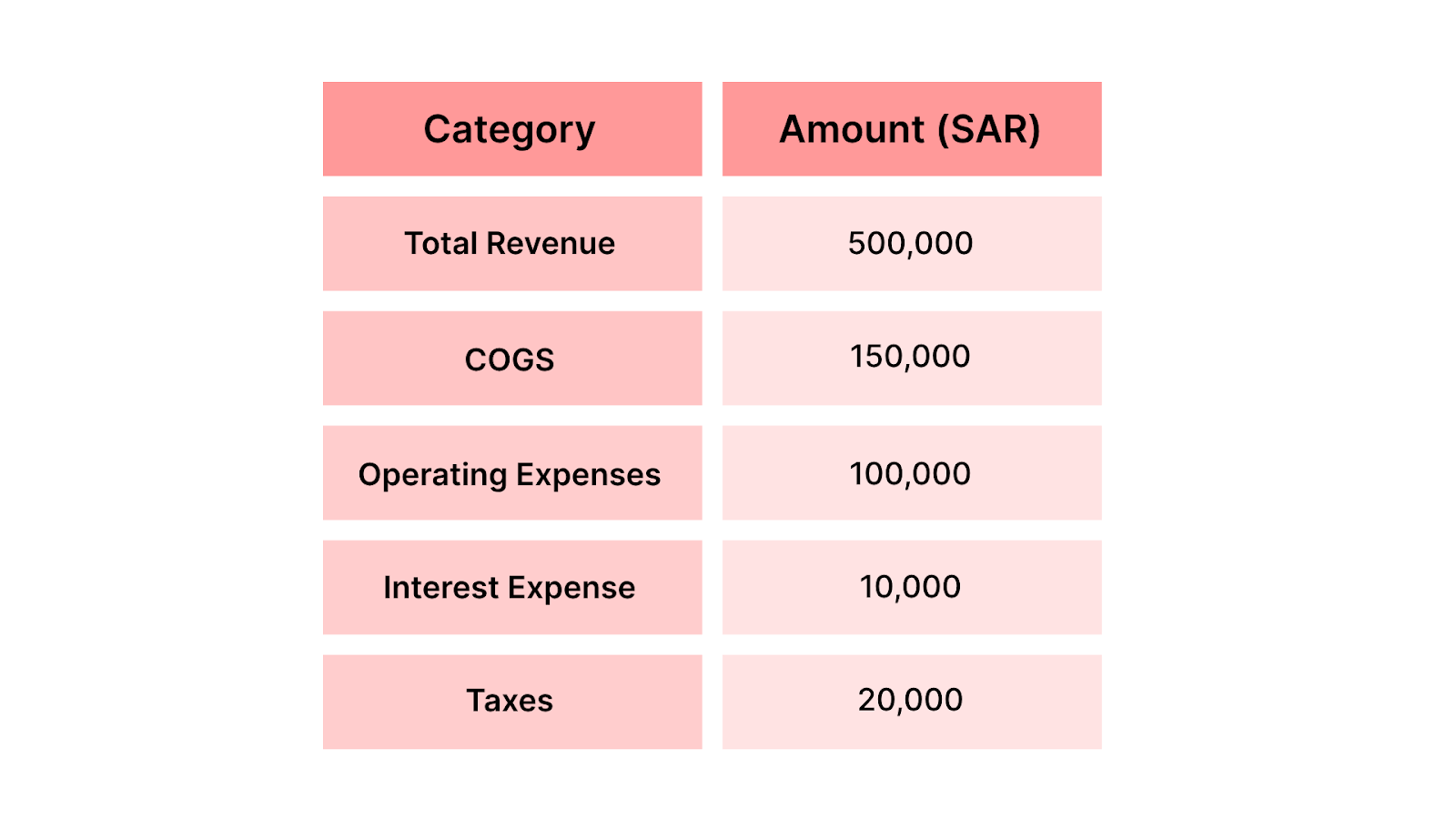
Are you curious about how to calculate net income and what it means for your business's financial health? Net income is the ultimate measure of a business’s profitability., reflecting the total money a company earns after accounting for all its expenses, Corporate tax, and finance charges. Understanding this figure is essential for business owners, investors, and stakeholders as it provides insights into the financial performance of a company.
In this guide, we’ll explain what net income is, how to calculate it with step-by-step instructions, and why it matters for your company’s financial health. Whether you're a small business owner or part of a large organization, mastering net income calculations is key to effective financial management and strategic planning. Let's dive into the basics and examples of net income calculation to enhance your financial decision-making.
Net income, also known as net profit, is the final profit a company earns after deducting all its business expenses, including the cost of goods sold (COGS), operating expenses, Corporate tax, and interest. It is the figure that reflects a company's profitability over a specific period, typically on a monthly, quarterly, or yearly basis.
Net income serves as a key financial metric that helps business owners, investors, and analysts evaluate how well a company is managing its expenses and generating profits. Simply put, it represents the "bottom line" of a company’s income statement.

Net income plays a significant role in various aspects of business operations. Here's why it matters:
Also Read: Financial Statements: The Cornerstone of Effective Business Management
Understanding the importance of net income is essential. Next, we’ll take a closer look at the formula you can use to calculate net income, which is the key to unlocking these insights.
The formula for calculating net income is simple:

Net Income = Total Revenue - Cost of Goods Sold (COGS) - Operating Expenses - Interest - Corporate tax
This formula accounts for all costs associated with running a business. Let’s break it down:
Let’s assume a small business in Saudi Arabia, “Saddle Co.,” has the following financials for the first quarter of 2023:

Step-by-Step Calculation:
In this example, the business's net income for the quarter is SAR 220,000.
With the formula explained and an example shown, let’s now compare net income with another key figure: gross income, to see how they differ and how both play a role in financial analysis.

With HAL ERP, calculating net income becomes a seamless process. Automate your profit and loss statements, track revenue, and expense details effortlessly. Discover how our ERP system simplifies financial analysis and boosts decision-making accuracy.
While both net income and gross income reflect a company's profitability, they differ in their scope and calculation.
Example:
Using our example from earlier, the gross income for Saddle Co. would be:
However, after accounting for operating expenses, interest, and Corporate taxes, the net income is SAR 220,000, which is a more accurate reflection of the company's profitability.
Also Read: Bringing Order to the Chaos of Expense Management With HAL ERP
Now that we understand the difference between gross income and net income, let's take a deeper look at the relationship between operating income and net income to better understand their roles in financial analysis.
Operating income, also known as EBIT (Earnings Before Interest and Corporate Taxes), is a measure of profitability that excludes interest expenses and Corporate taxes. It reflects the earnings generated from a company’s core operations.
The relationship between net income and operating income can be summarized as:
Operating Income = Gross Income - Operating Expenses
Formula:
Net Income = Operating Income - Interest Expenses - Corporate Taxes
Example:
If operating income for Saddle Co. is SAR 250,000, and the company has SAR 10,000 in bank finance charges and SAR 20,000 in Corporate taxes, the net income will be:
Now that we have established the relationship between operating income and net income, let’s look at how net income is reported on the income statement and its significance in assessing a business's financial performance.
Take control of your operating income with HAL ERP. Simplify calculations, monitor operational expenses, and make smarter decisions with real-time data integration. Let HAL ERP guide your business toward financial success.
The net income figure is typically the last line on a company's income statement, also known as the Profit and Loss (P&L) Statement. This financial statement summarizes the company's revenues, costs, and expenses during a specific period. The income statement provides an in-depth look at how much profit or loss the business generated.
Here’s an example of how net income would appear on the income statement for a company like ABC Enterprises Inc.:
Mastering the concept of net income empowers you to read between the lines of your financial statements and uncover the real story behind your revenue and expenses. As your business grows, regularly reviewing net income alongside gross and operating income can offer valuable insights into cost control, pricing strategies, and overall financial resilience.
Also Read: Financial Accounting Made Simple: Principles, Types, and Key Functions
Whether you're fine-tuning your operations or planning long-term investments, keeping a close eye on this key metric ensures you're steering your business in the right direction.
Net income is a key metric that provides a snapshot of a company's profitability after all expenses are accounted for. Calculating it correctly is essential for business owners, investors, and financial analysts to assess the financial health of a company.

By following the net income formula and understanding its importance, you can better manage your finances, make informed business decisions, and track the overall performance of your company.
For businesses looking to streamline financial management, integrating an ERP system like HAL ERP can help. HAL ERP enables real-time financial tracking, provides insightful reports, and ensures accuracy in your income statements, making net income calculation easier and more reliable.
Key Features of HAL ERP for Financial Management:
Book a demo today and see how HAL ERP can help you manage your net income calculation and improve your financial decision-making.
Q1. What’s the difference between net income and gross income?
Gross income is the revenue a business earns after deducting the cost of goods sold (COGS), while net income is what remains after subtracting all expenses, including operating costs, interest, and corporate taxes.
Q2. Why is net income important for investors?
Net income shows the company’s actual profitability. Investors use it to evaluate financial health, compare performance across companies, and determine whether the business is generating sustainable returns.
Q3. How does net income affect my business taxes?
Net income is the basis for calculating corporate tax liability. A higher net income usually means higher taxes, while a lower net income reduces the tax burden.
Q4. Can net income be negative?
Yes. If expenses exceed revenue, the business records a net loss instead of net income. Consistently negative net income signals financial challenges.
Q5. How is net income shown in financial statements?
Net income appears at the bottom of the Profit and Loss (P&L) statement and also flows into the equity section of the balance sheet as retained earnings.
Q6. Is net income the same as cash flow?
No. Net income accounts for revenues and expenses (including non-cash items like depreciation), while cash flow tracks actual money moving in and out of the business.


